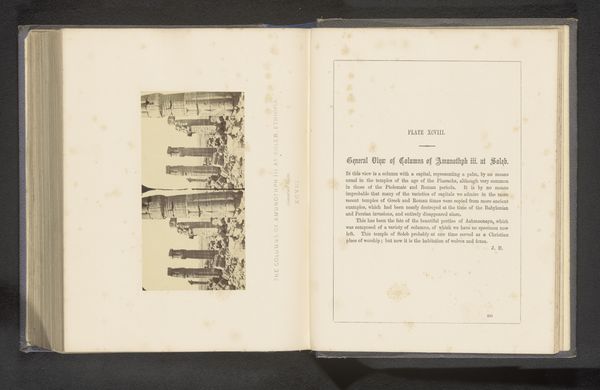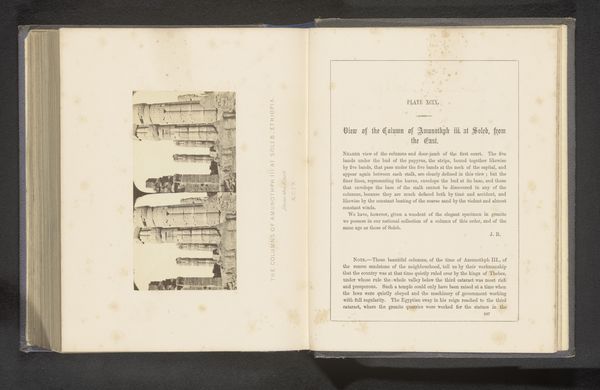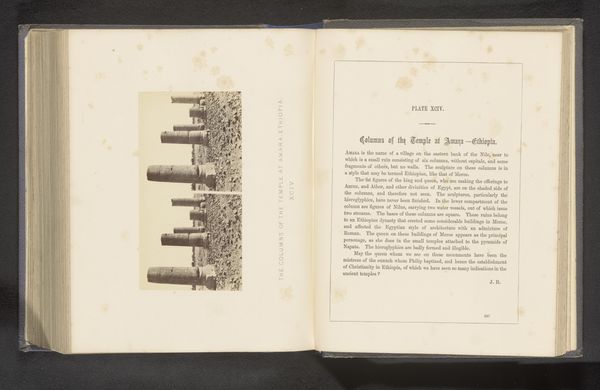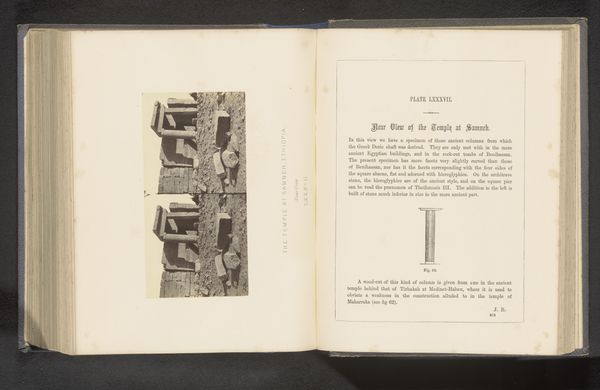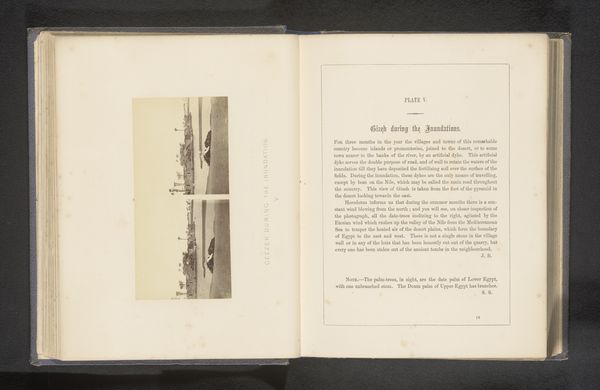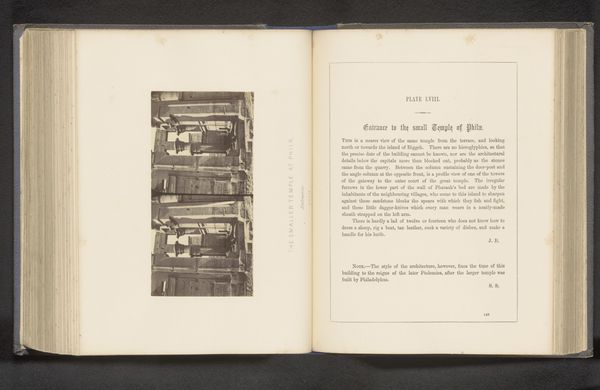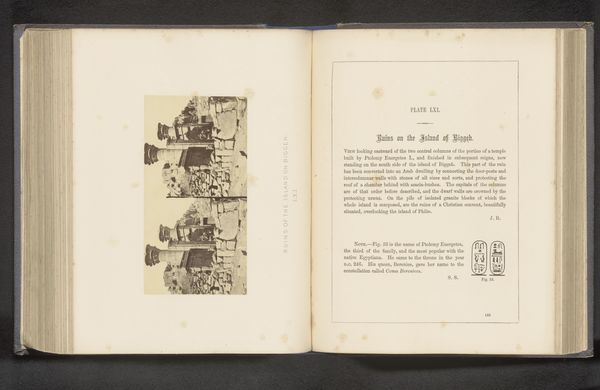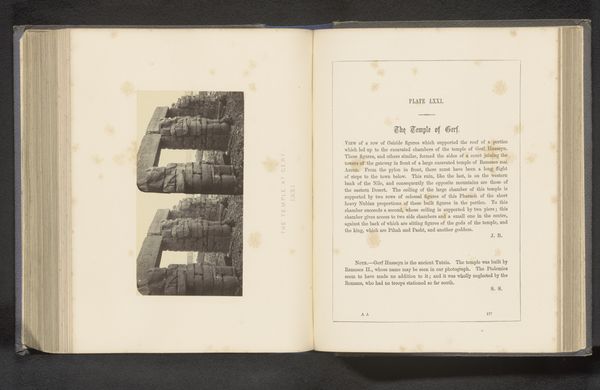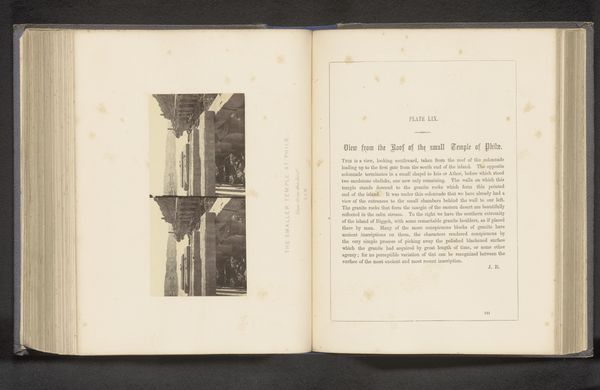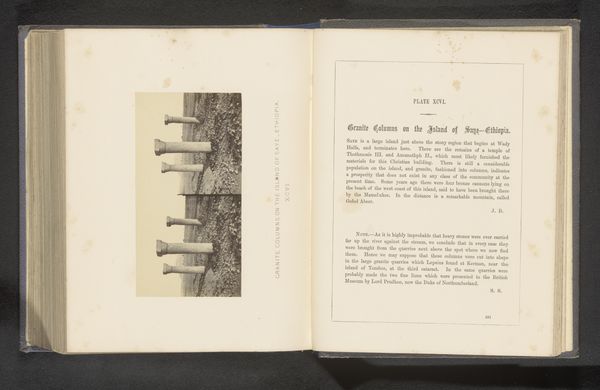
print, photography, site-specific, gelatin-silver-print
# print
#
landscape
#
photography
#
ancient-mediterranean
#
site-specific
#
gelatin-silver-print
Dimensions: height 73 mm, width 141 mm
Copyright: Rijks Museum: Open Domain
Editor: We're looking at Francis Frith's gelatin-silver print, "Ruins of a Temple," dating from before 1862. The photo showcases what's left of massive columns. The monumentality juxtaposed with its state of decay gives it such a melancholy feeling. What do you make of it? Curator: This photograph isn't just about the aesthetic of ruins; it speaks volumes about how the 19th century viewed and consumed ancient cultures. Frith was working during a time of intense colonial expansion, and his images played a role in shaping the European understanding, or misunderstanding, of the Middle East and Africa. Notice how the composition emphasizes the scale of the ruins against the relatively blank sky and desolate landscape. What impression do you think that conveys to a European audience? Editor: Perhaps it reinforces a sense of Western superiority, contrasting advanced European society with what they perceived as the "fallen" state of these ancient civilizations? Curator: Exactly. Photography, at that time, was seen as an objective record, but of course, it's always framed by the photographer's perspective and the socio-political context in which they are operating. Frith's work helped build and solidify those prevailing narratives. It also fed the orientalist appetite of the time, creating desire and often reinforcing harmful stereotypes. Did Frith’s intent align with any specific agenda being pushed at that time, or was his motivation for documentation of the ruins as simple as one of preservation? Editor: This makes me reconsider the power dynamics embedded in historical landscape photography. I had initially viewed it as simply an aesthetic representation of beauty. Curator: And now you can see the historical lens can give us so much more appreciation, even where there is an unfortunate original context. There's much to unpack!
Comments
No comments
Be the first to comment and join the conversation on the ultimate creative platform.
